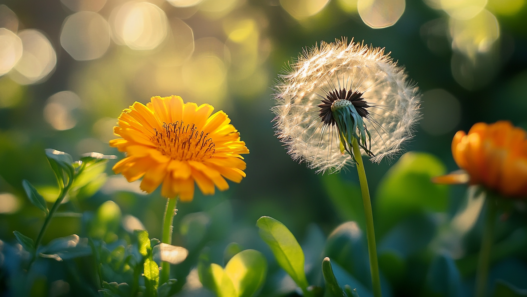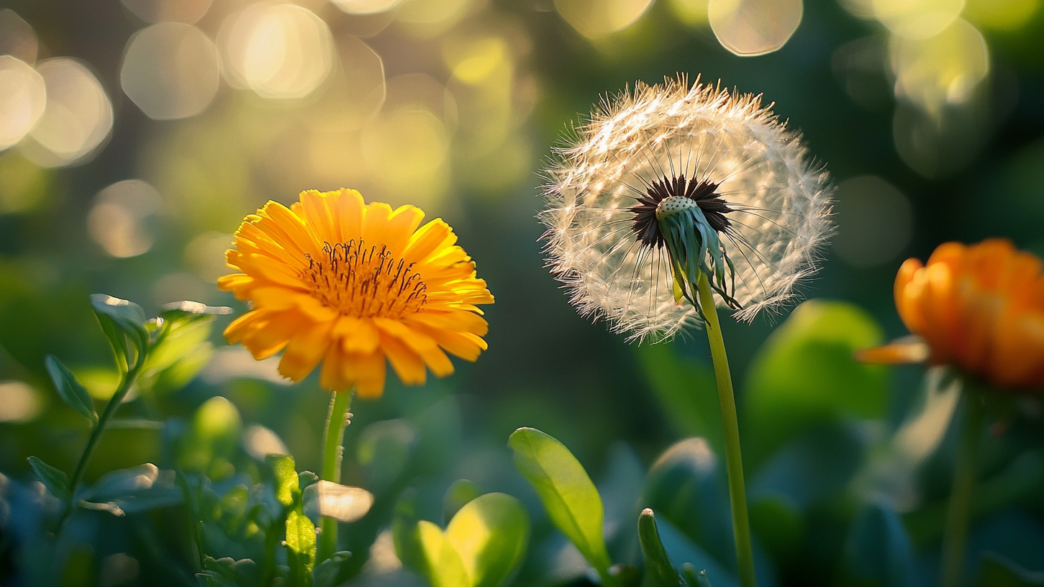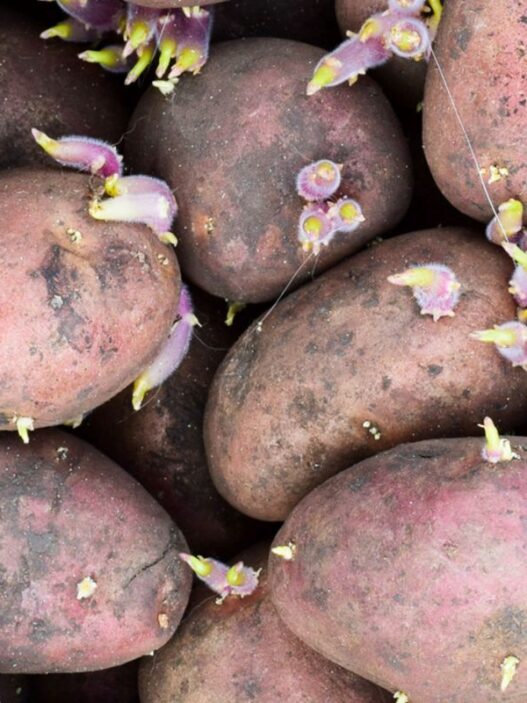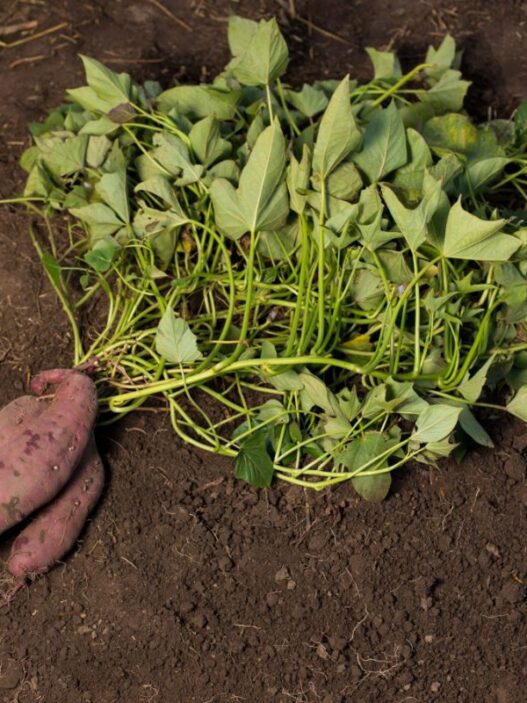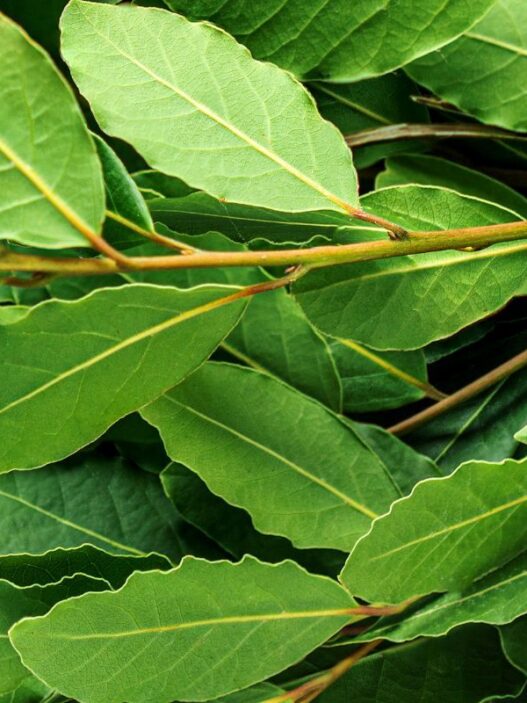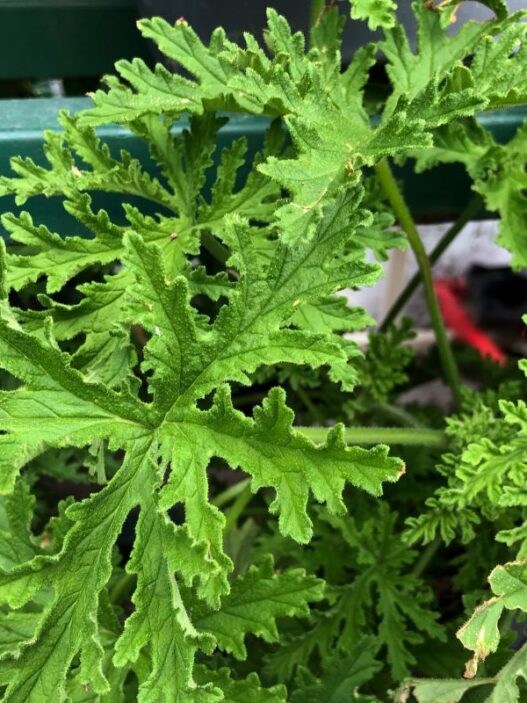Let’s face it! Calendula and dandelions definitely look pretty similar. But after growing both for many years (the calendula on purpose, but the dandelions by accident I have to admit!) I’ve come to understand there are many differences!
I think there are at least 7 major differences between calendula and dandelions, which are:
- Their scientific classification
- Their origin and distribution
- Their size (calendula are about twice the size of dandelions)
- Their flower shape
- The type of leaves that they grow
- Their growing conditions and cultivation
- The uses of the two respective plants
In this post, I’ll take a look at these 7 (subtle) differences in detail.
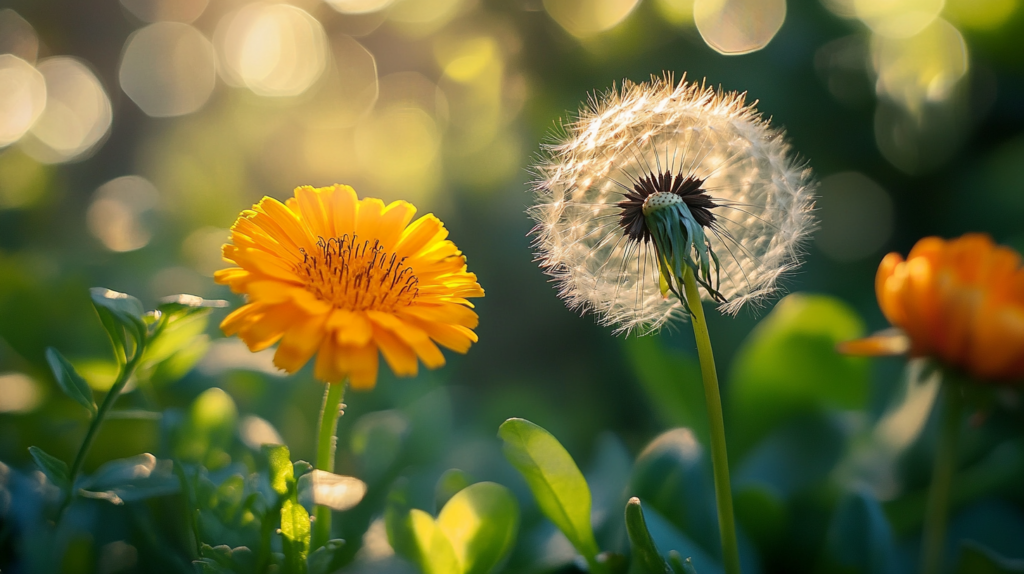
Calendula vs. Dandelion: Overview
Here are the primary differences between calendula and dandelion plants:
| Calendula | Dandelion | |
| Scientific Classification | Family: Asteraceae Genus: Calendula | Family: Asteraceae Genus: Taraxacum |
| Origin | Native to Europe, Asia, and North Africa | Native to Europe and Asia |
| Description | Herbaceous, daisy-like plants with yellow to orange flowers | Broadleaf, perennial weed plants that produce yellow puffball-like flowers |
| Growing conditions | Full sun to partial shade Well-drained soil Cool temperature, between 50°F-70°F USDA zones: 2a-11b | Full sun Moist soil Warm temperatures, between 65°F-77°F USDA zones: 3-9 |
| Uses | Skin ointments, dyes, and food | Dyes, traditional medicine, and food |
The 7 Differences Between Calendula And Dandelions
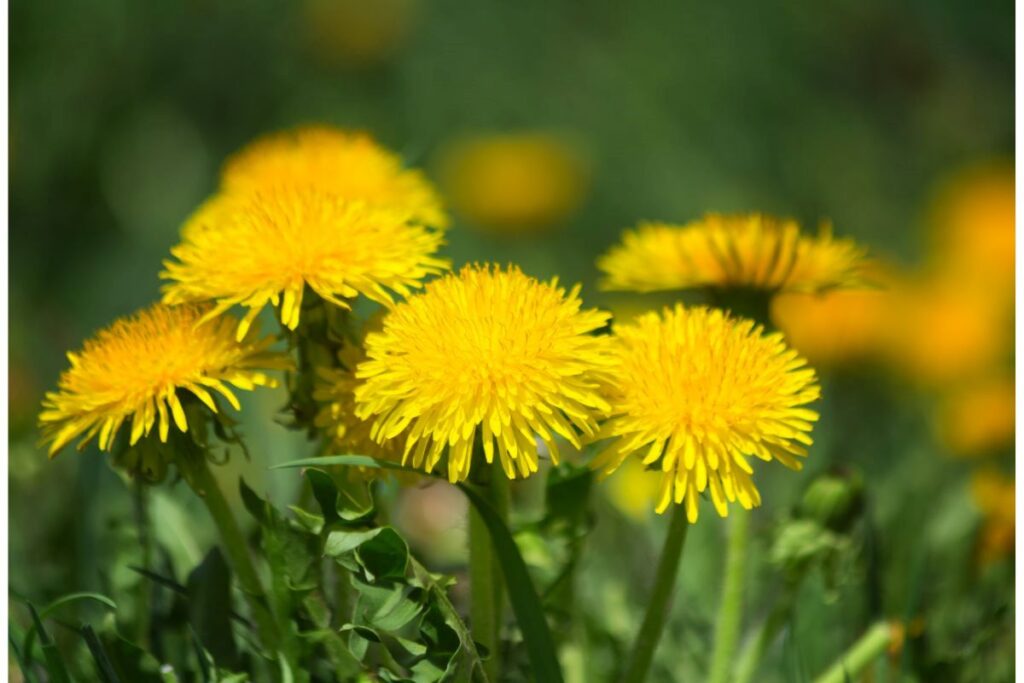
Calendulas and dandelions are two different plants (obviously!!). Although they belong to the daisy family, calendula and dandelions have seven differences, which are:
1. Scientific Classification
Since both plants look like siblings, it’s no surprise that calendula and dandelion plants are members of the same family, Asteraceae.
The former belongs to the genus Calendula, which contains around 15-20 varieties. Calendula officinalis, also known as pot marigolds, are among the popular species in this group.
Like most members of this genus, the former are herbaceous plants that can grow as annuals or perennials, depending on the region. They typically bloom in the spring and summer.
Dandelions, on the other hand, belong to the genus Taraxacum, which is much larger, containing around 60 accepted species.
Taraxacum officinale, or the common dandelion, is among the known species in this group that come in numerous forms. Those plants are flowering weeds that typically bloom in the spring.
2. Origin and Distribution
Native to southern Europe, the Mediterranean region, southwestern Asia, and Macaronesia, calendula plants pretty much grow everywhere. That’s especially true since those plants were reportedly introduced to the US around the 1600s. Can you believe that?
You can grow them in US hardiness zones 2a to 11b. Calendulas don’t survive in areas with extremely cold or hot weather at temperatures below 25°F or higher than 85°F.
Dandelions, on the other hand, are native to Europe and Asia, but they were introduced to North America. They generally inhabit temperate regions and thrive in warm climates.
However, those plants are hardy and can tolerate cool temperatures up to 50°F. You can grow dandelions in USDA zones 3-9.

3. Size
Calendula plants’ heights differ according to the species. They can be between 10 and 12 inches tall.
However, some varieties, like Calendula officinalis, produce branched stems that spread to an impressive 2 feet long!
Dandelions, on the other hand, are generally smaller than calendulas, with the common dandelion reaching a mature size of 2 to 6 inches.
However, some plants grow up to 24 inches tall.
4. Flower Shape
Both plants have similar flower colors, which is why people can confuse them with one another.
Calendulas can be yellow or orange. Those colorful petals typically surround a dark brown center.
Dandelions are usually bright yellow. However, some shades of orange can go into the mix. Some species also produce white or pink flowers, although the latter hue is uncommon.
When it comes to size, calendula plants develop larger blooms, between 3-6 inches. They produce flat, daisy-like flowers with single, double, or multiple ray floret layers.
For those wondering, the former are small flowers with tubular, fused petals, making them strap-shaped. Dandelions also have numerous ray florets.
However, those colorful petals form a puffball-like structure instead of a flat, daisy-like flower. The numerous florets cover even the center.
Plus, the blooms close at night and open back up in the morning. As for size, dandelion flowers generally range from 1 to 3 inches.
5. Leaves
Calendula and dandelion leaves are easily distinguishable. The former produces leaves of 3-6 inches.
They can have obovate, oblong, or lanceolate shapes with dentate leaf margins.
When it comes to arrangement, calendula leaves follow a simple, alternate structure.
Taraxacum leaves also have a length between 3 and 6 inches. However, they have an oblanceolate shape that is rounded on the apex and tapers toward the base.
Leaf margins are dentate or lobed. As for the arrangement, dandelions follow a rosulate structure.
6. Growing Conditions and Cultivation
Caring for calendulas and dandelions is generally easy. The former prefer at least six hours of full sun and can benefit from partial shade, especially during hot summer days.
Those daisy-like plants thrive in well-drained, organic matter-rich soil. As for the pH, calendulas like a slightly acidic to neutral soil, between 6 and 7 pH.
The latter plants prefer full sun, between 8 and 10 hours daily. However, they aren’t picky and can grow in any light condition.
Dandelions can also grow in various soil textures, whether sandy, loamy, or clay-like. However, if you want them to develop quickly, make sure the soil is rich in organic matter and moist.
While those plants prefer a neutral pH of around 7, they can tolerate a pH as low as 4. Even when the soil is slightly alkaline, around 8 pH, dandelions will still grow.
7. Uses
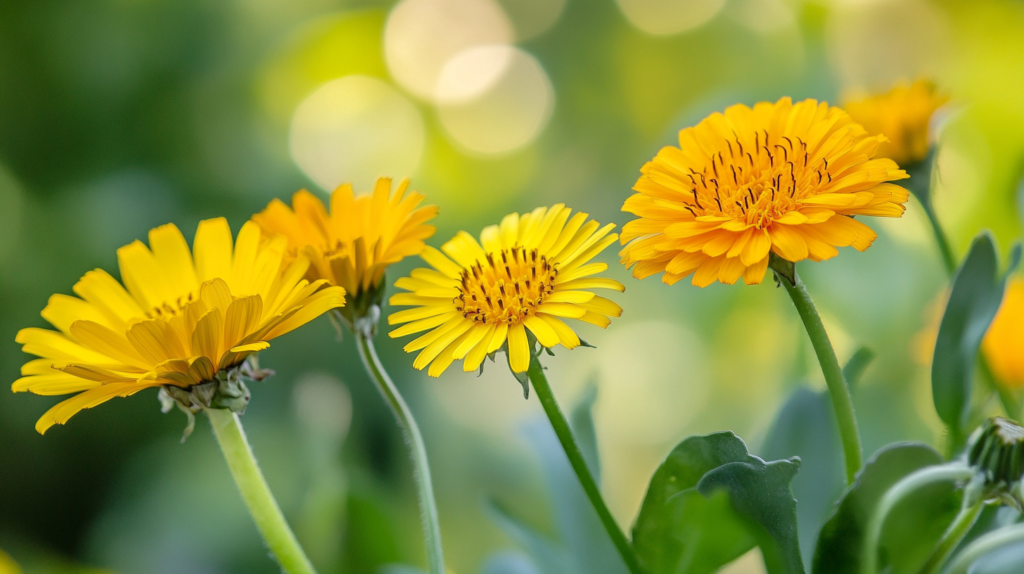
Both plants are used in dyes and in cooking as tea or garnish, among other dishes. However, dandelions might cause allergies for some people.
Aside from that, both plants are popular in traditional medicine. They can promote healthy skin cell growth. Calendulas can also boost oral health.
As for dandelions, gardeners use them as companion plants thanks to their taproots. Those structures can reach massive depths, transporting water and nutrients to surrounding plants.
